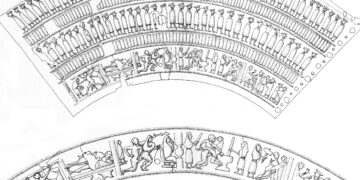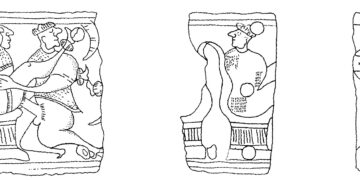In antiquity, the banquets and symposiums emphasized the “internationally accepted” ritual of alcohol consumption, whose role in promoting commercialism, in the exchange of hospitality and the dynamics of power in the last millennium BC was well known. All the standard motifs in the figurality of Situla art established a precious narrative that was much more complex than a flat or purely decorative image, especially in the classical phase of that creation. Such a set of semantic signs, presented with a certain reason and with a certain logic, required a more “enlightened” reader and interpreter from the archaic society of that time. Situla art was not, nor could it be, Biblia pauperum of the wider community of Iron Age people. Since then the prestige of materiality was inferior to the prestige of symbols, which, just like the “international symposium”, was the “international metalanguage” of the communicative and cognitive values of their time.
Many interpretations bring us into the spheres of legality and the principles of the sanctity of the “love embrace” in which women nevertheless played a decisive role. Thus, on the example of a belt plate decorated in the Situla art from Brezje, an unusual but very strong and explicit erotic scene is presented. Essentially such an act of love was considered the most intimate and beautiful part of human life. The woman is also in this scene of emphasized symbolic value and divine character, for she dominates in lavish attire and sits on an even more lavish throne, and the man is in a lower position, with his head turned. It is the woman, who will enable the reproduction of the elite, and thus maintain the existence of the ruling associated with dynastic inheritance. Such a “marital embrace” became interpreted in this masterpiece as sublime and sacred.






































